
13 million tons of plastic enter the world’s oceans every year according to the Ocean Conservancy, but much of it is largely out of view. This plastic, along with other debris, gets trapped inside great networks of ocean currents, known as gyres. The combined area of the five main gyres is larger than any country on earth save Russia.
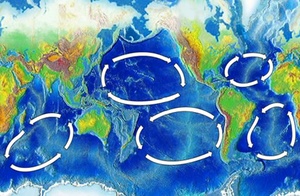
The technology is new and still needs refinement. Sciacca, the head of science for the Race for Water Foundation, hopes to do just that.
R4W is looking at multiple study sites for a plastic-to-energy pilot project: Switzerland, the coast of Latin America and Easter Island. The latter, the only site located within one of the world’s ocean gyres, presents an opportunity to show that plastic-to-energy can help countries and communities begin to deal with the tides of plastic waste circulating our oceans.
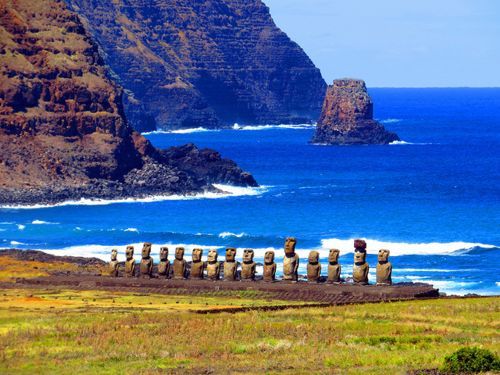
‘Pollution is Everywhere’
Before looking at a technological solution, R4W had to get a grasp of the extent of the problem of plastic debris in the world’s oceans. In 2015 they engaged in an ambitious, nine-month journey, circumnavigating the globe in a 69-foot trimaran to study the amount of plastic debris in the world’s oceans. They were surprised at what they found.
After traveling 32,000 nautical miles and visiting 17 locations – including Easter Island, Guam and Hawaii – the team came to one simple but dramatic conclusion: “Plastic pollution is everywhere”.
“It is clear that an efficient grand-scale clean-up of the oceans is unrealistic,” R4W said in a press kit.
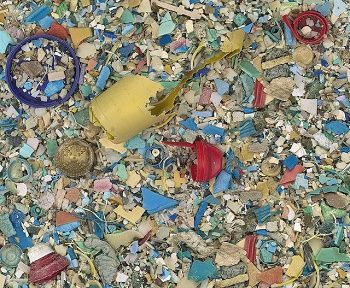
Animals Starving, Suffocating
Nearly 700 marine species are affected by this plastic waste, from tiny zooplankton to stately sea turtles and soaring seabirds. Nicholas Mallos, director for the Ocean Conservancy’s Trash Free Seas, told a panel of senators during a May 17 hearing on marine debris that roughly 62 percent of seabirds currently have plastic in their digestive systems.
Photographer Chris Jordan has documented what plastic can do to seabirds. His 2009 video Midway: Message from the Gyre captures the plight of albatrosses on Midway Atoll in the North Pacific Ocean. Adult birds, unable to distinguish between food and all the plastic swirling around their native home, feed bits of debris to their young. Those chicks then succumb to starvation because their stomachs are full of plastic.
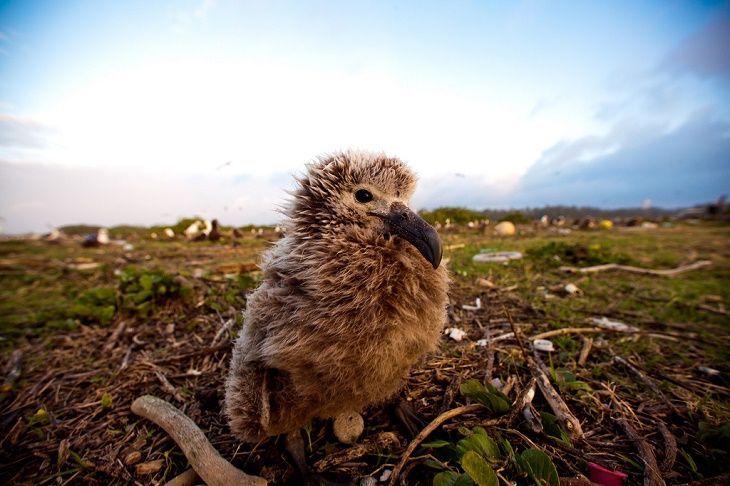
In July, Eric Otjen, assistant curator of mammals for SeaWorld San Diego and part of the organization’s rescue team, traveled to Capitol Hill to take part in a Congressional briefing on marine debris.
Entanglement in spent fishing lines “can be a death sentence” for many marine animals, Otjen said. He showed several pictures of rescued seals with deep red scars where forgotten fishing lines had tightened like nooses around their necks.
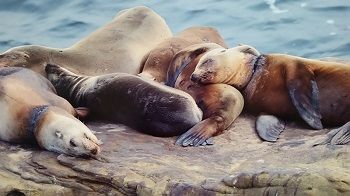
Throwaway Marvel
The first fully synthetic plastic was introduced over 100 years ago with the invention of Bakelite in 1907. Bakelite proved to be resistant to heat, highly durable and relatively easy to produce on a large scale.
Plastic showed its value during World War II. Production tripled in the United States during the war, as plastics replaced other scarce resources to make aircraft windows, helmet liners, body armor and more. The malleable material gained more ground after the war, proving to be a cheap alternative to products traditionally made of steel, wood and glass.
Today plastics are an integral part of life. They make up the toothbrushes we use and the toys our children play with. They are essential to the buses we ride to work, the smartphones we carry with us and the medical care we need to stay healthy. Even the food and other products we buy are often covered in plastic shrink-wrap.
This the ubiquity of plastic has led to a new perception: disposability. Single-use plastic products are often used and disposed of within a matter of minutes. You can finish a bottle of water in 10 to 15 minutes. But that bottle can linger in the environment for 500 hundred years or more.
“The fact is that we discard most of our trash without considering it as something valuable,” Sciacca told Voices for Biodiversity.
“This linear way to consume resources and dump cannot last longer. Natural resources are limited and we have to find a more sustainable way to live. Considering waste as a resource is a more sustainable paradigm.”
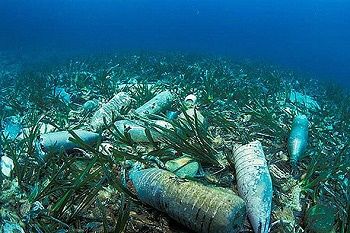
Sciacca said he was “shocked by stories” of islanders dealing with plastic and other debris piling up on their shores.
In addition to plastic bottles, plastic containers and used fishing lines, Sciacca and the R4W team found flip-flops, lighters, ropes, even a vacuum cleaner.
Every week or even every day, the people who live on these islands have to clean up the plastic debris that washes ashore.
Islanders aren’t paid to clear waste from their shores, Sciacca said. They do it to keep their communities clean for tourists, who provide a significant source of income for many of the islands that Sciacca and the R4W team visited. Many locals are also dependent on fishing. They told Sciacca that they see more and more plastic mixed in with their daily catch.
The problem “is too big to solve with their own means,” according to Sciacca.
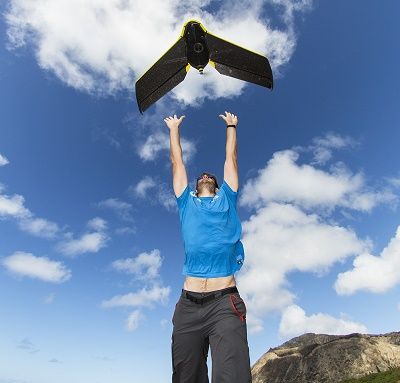
Now Sciacca and R4W want to show that high-temperature hydrolysis can turn plastic waste into energy in an economically viable way, while also paying locals to collect the waste that washes up on their shores every day.
A successful pilot facility in a place like Easter Island would be able to handle up to five tons of plastic waste per day, converting it to a combustible gas that could be used to power turbines and create electricity. This new energy source would help offset the many barrels of diesel fuel that are currently shipped in to run the island’s turbines.
“[O]ur idea,” Sciacca reported, “is to show people that we can consider plastic waste as a valuable resource to produce energy such as electricity. We want to show, in countries or islands where electricity is costly, that turning plastic waste into energy is an economically viable concept.”
No matter the outcome, Sciacca has already seen benefits in his work for R4W. The most rewarding part of his work is “to be able to give and relay the voice of local remote communities that are directly and brutally facing the most visible part of our mess.”
Photos are copyright protected and may notbe reproduced without permission. Copyright information for the photos is as follows: (1) The five gyres, photo courtesy of Flickr Creative Commons, (2) Ahu Tongariki view – Rano Raraku moai – statues – Easter Island, photo courtesy of Flickr Creative Commons., (3) Gyre, by Chris Joran. Plastic gathered from the Pacific Ocean, photo courtesy of Flickr Creative Commons, (4) Journey to Midway Island by Kris Krϋg, photo courtesy of Flickr Creative Commons, (5) Scarred seals, photo provided by Eric Otjen during July 12 Congressional briefing on marine debris, (6) Seabed-pollution, photo courtesy of Flickr Creative Common, (7) Frédéric Sciacca releasing drone to study pollution along Hawaiian island, photo courtesy of Race for Water Foundation.